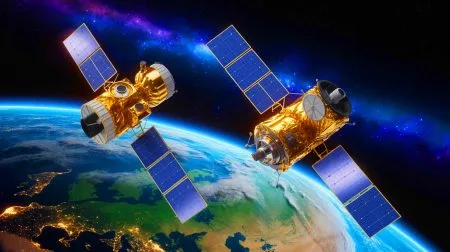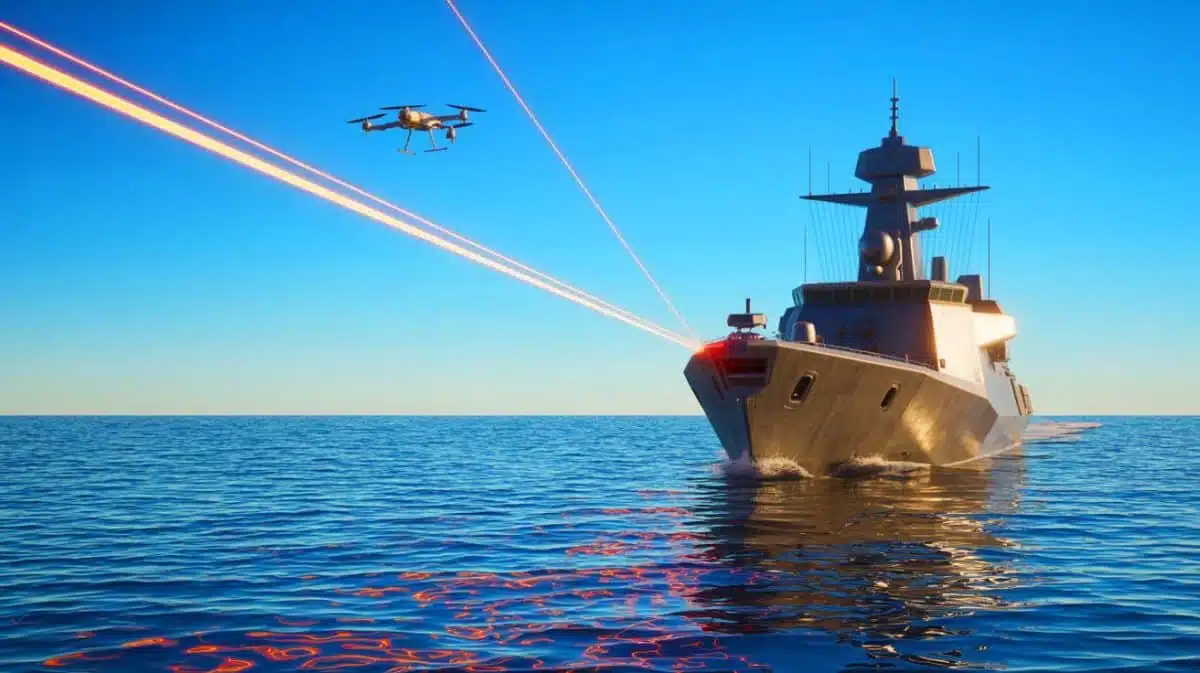| IN A NUTSHELL |
|
In a groundbreaking move, the US Navy is advancing its capabilities in laser weaponry with the launch of the ambitious ‘SONGBOW’ program. This initiative aims to develop a powerful 400-kilowatt laser weapon system designed to neutralize various aerial threats, including drones and missiles. By awarding a $29.9 million contract to Coherent Aerospace & Defense, the Department of Defense is investing in cutting-edge directed-energy systems that could revolutionize military defense strategies. This article explores the key components and implications of the SONGBOW project, its potential impact on naval defense, and the strategic advantages it offers.
Revolutionizing Naval Defense with 400kW Laser Technology
The US Office of Naval Research (ONR) has awarded a contract to Coherent Aerospace & Defense to develop a 400-kilowatt laser weapon as part of the SONGBOW project. This initiative focuses on creating advanced pulsed fiber lasers and subsystems suitable for naval deployment. The core of this development involves combining multiple 50-kilowatt laser modules into a single, powerful beam supported by precision beam-control technology.
This innovative approach enables scaling to higher power without compromising beam quality, crucial for targeting fast-moving threats. The technology is primarily defensive, designed to intercept drones, missiles, and even hypersonic weapons, enhancing the Navy’s protective capabilities. The development of this high-output laser system signifies a significant advancement over current technologies, like the Laser Weapon System (LaWS), which operates at lower power levels. With this 400-kilowatt system, the Navy could engage more robust threats at greater distances, offering a substantial leap in military laser capabilities.
Strategic Integration of Directed-Energy Weapons
Coherent Aerospace & Defense, a leader in high-energy laser development, is spearheading this ambitious project. The SONGBOW contract, set as a cost-plus-fixed-fee agreement, outlines a development timeline that includes a 20-month base period with additional options, potentially concluding by January 2027. Initial funding of $12.88 million from Fiscal Year 2024 has been allocated, emphasizing the urgency of progress within the fiscal year.
The integration of directed-energy weapons like the SONGBOW laser is part of a broader strategy to enhance naval defense systems. By complementing existing missile systems such as the Aegis Combat System and SM-6 interceptors, the Navy aims to create a layered defense capable of addressing evolving threats, including drone swarms and hypersonic missiles. High-energy lasers provide a cost-effective, rapid response to potential saturation attacks, ensuring the Navy maintains its maritime superiority.
Coherent’s Role and Future Prospects
Coherent Aerospace & Defense’s involvement in the SONGBOW project underscores its expertise in photonic technologies. Having previously developed fiber laser systems for both commercial and defense markets, Coherent is well-positioned to tackle this challenging endeavor. The successful deployment of the SONGBOW laser could set a new standard in naval warfare, offering a potent combination of power, precision, and speed.
While specific deployment platforms for the new laser system remain undisclosed, the project’s successful execution could significantly enhance the US Navy’s combat capabilities. The potential to reshape modern naval warfare is immense, with SONGBOW representing a vital investment in future-proofing America’s defense against emerging threats. As the project progresses, it will be essential to monitor its impact on global military strategies and the balance of power.
The Implications of High-Powered Lasers in Modern Warfare
The development of high-powered laser systems such as SONGBOW holds profound implications for modern military strategies. These systems offer a transformative approach to defense, providing rapid, precise engagement of aerial threats. The cost-effectiveness and speed of laser weapons make them an attractive alternative to traditional missile systems, capable of addressing an array of threats from drones to advanced missiles.
As laser technology continues to advance, its role in military applications is likely to expand, influencing both defensive and offensive strategies. The potential for lasers to perform tasks such as remote sensing and battlefield illumination further underscores their versatility and strategic value. As nations continue to invest in directed-energy systems, the landscape of modern warfare will undoubtedly evolve, driven by technological innovations like those seen in the SONGBOW project.
As the US Navy embarks on this pioneering journey with the SONGBOW program, the world watches closely to see how this technology will redefine military engagement. With the potential to reshape naval warfare and defense strategies, the question remains: how will other nations respond to this leap in directed-energy capabilities, and what will be the global implications of such advancements?
Did you like it? 4.5/5 (30)








Does anyone else think this sounds like something straight out of a sci-fi movie? 🤖
Enfin une innovation qui ne coûte pas un bras! Bravo pour le laser éco-friendly! 😄
How does this laser compare to traditional missile defense systems in terms of cost and efficiency?
Quid de la sécurité pour les civiles avec ces nouvelles technologies? 🤔
Skeptical about how effective this will be in real combat situations. Anyone else? 🤨
Thanks for the info! This could be a game-changer in military tech! 🚀
400kW? That’s some serious power! Can’t wait to see it in action. 🔥